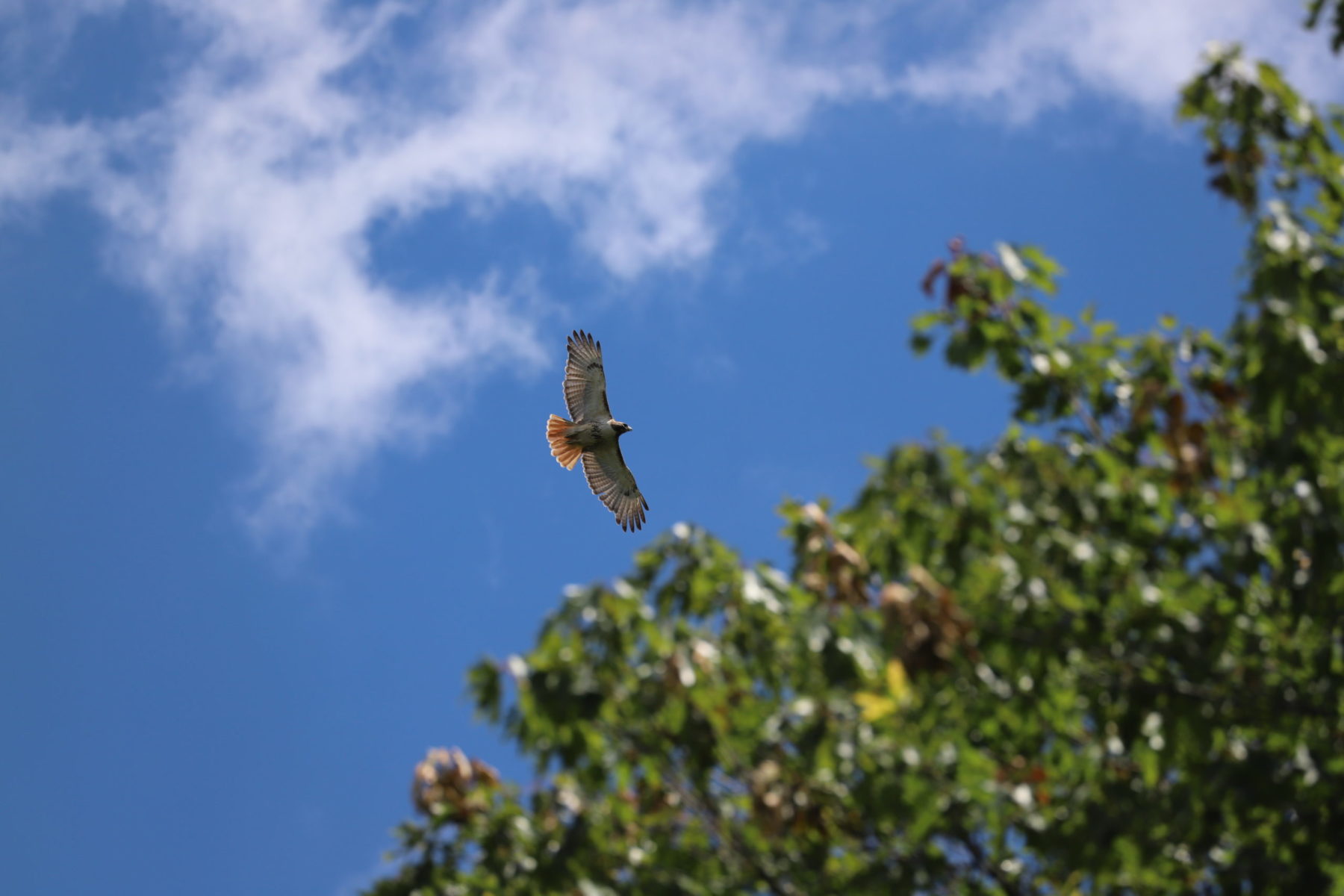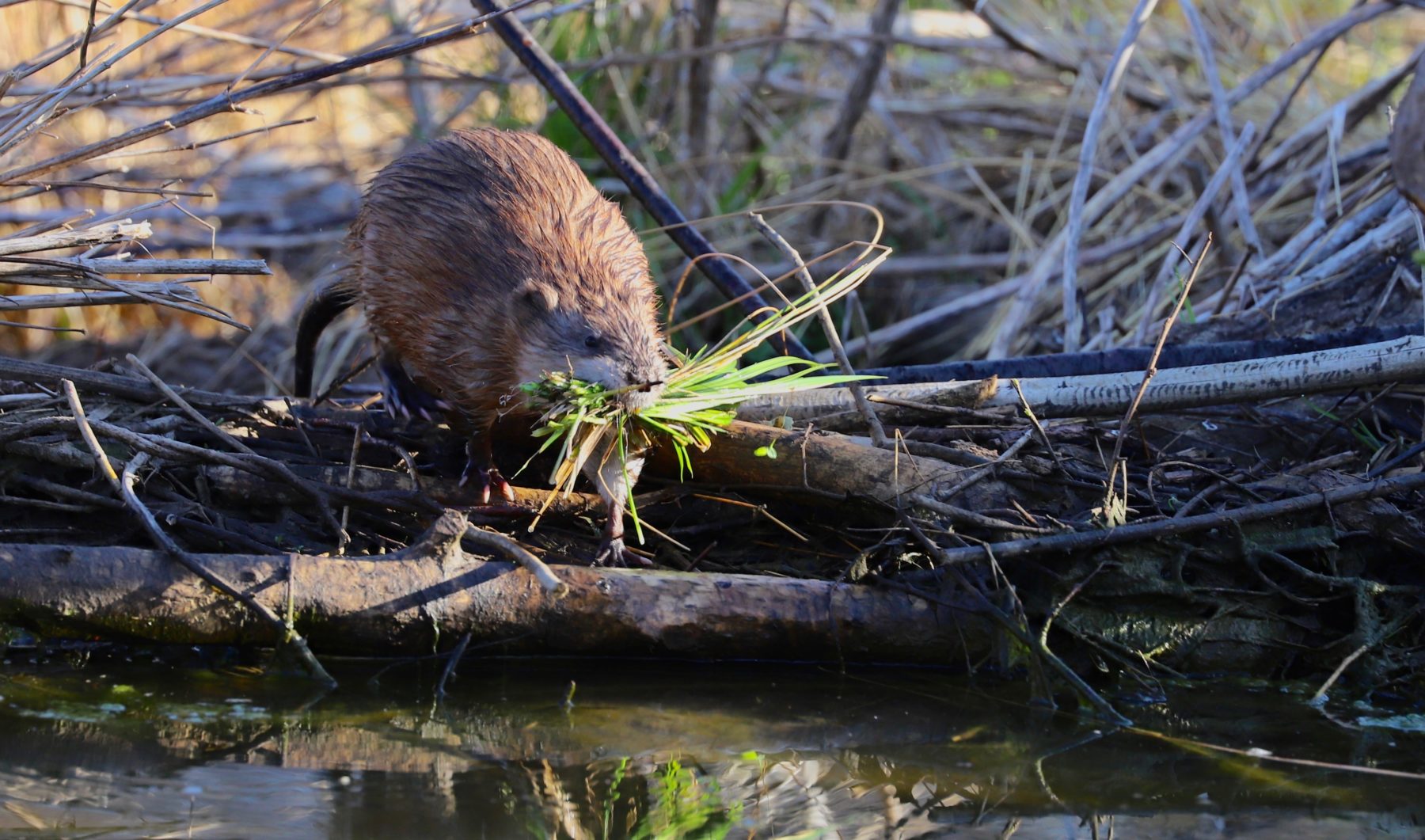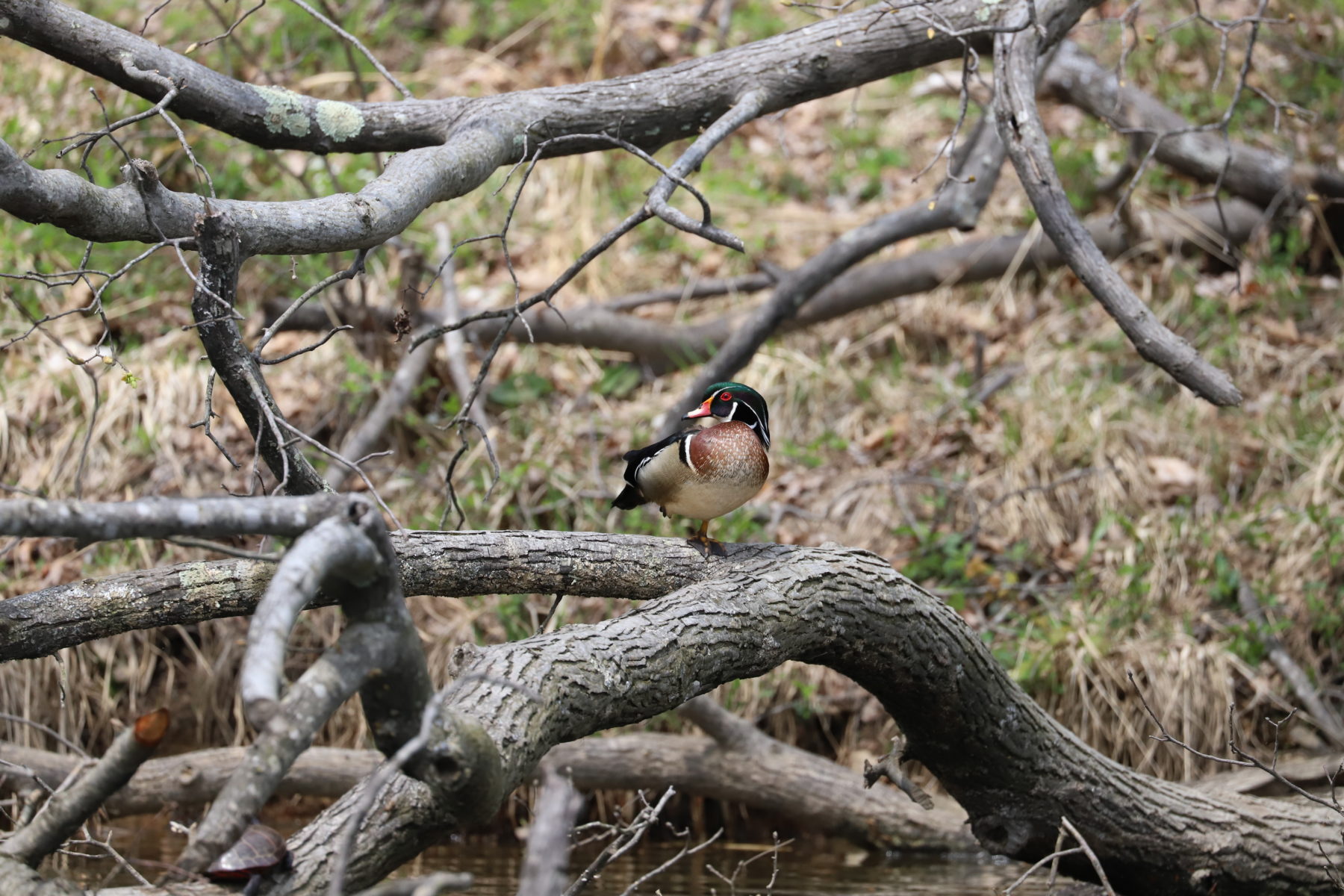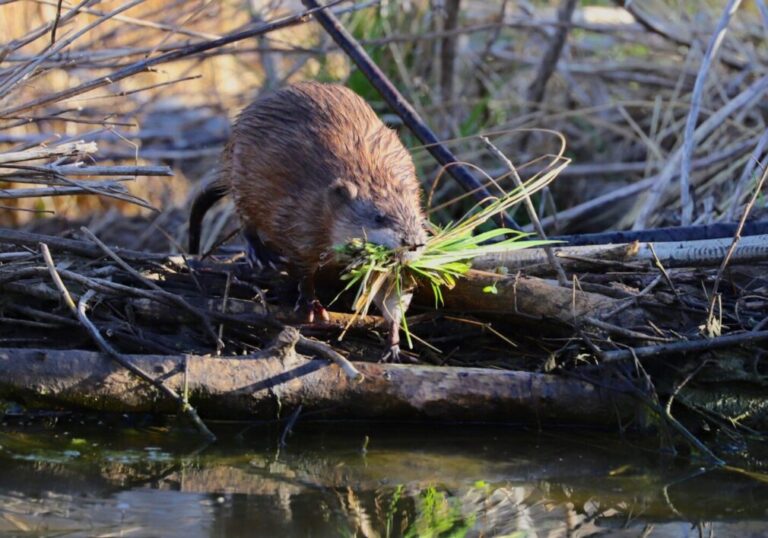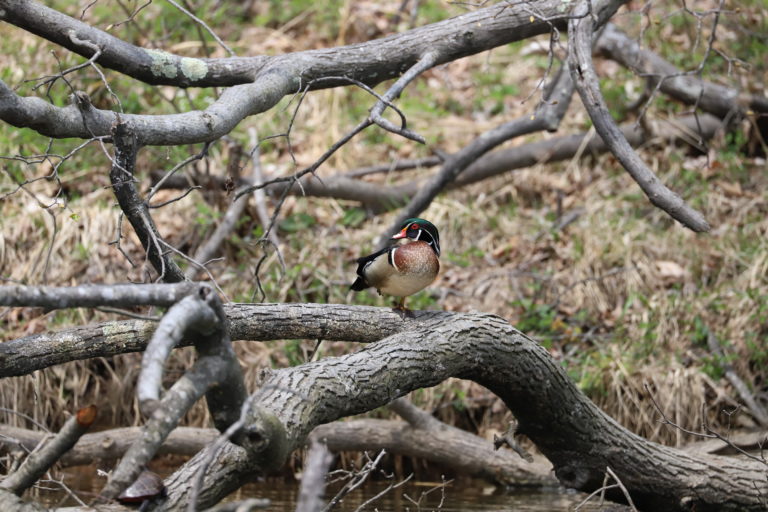What should you do if you encounter wildlife?
- Remain Calm
- Always ensure that wildlife have a clear escape route
- Enjoy watching wildlife from a safe distance
- Do not approach & NEVER feed wildlife
- Keep children nearby and dogs leashed
- If an animal does not flee, back away slowly & leave the area
- If an animal becomes bold or aggressive, make noise and wave your arms as you back away
Wildlife species are valuable contributors to our ecosystems and our parks. Peacefully living alongside them has as much to do with our actions as it does theirs.
Living with Red Foxes
Red foxes are one of the most common species of wildlife living in Montgomery County. They are highly adaptable and can be found in both suburban and urban environments. Ensuring that foxes are viewed as good neighbors has as much to do with our actions as it does theirs.
Living with Raccoons
Raccoons are very clever animals but are often seen as a nuisance. Catching a glimpse of this animal can be exciting but can also be alarming to some. There are some things to do, and some things not to do, to help keep raccoons wild and minimize conflicts.
Living with Snakes
As the weather improves through the spring and summer, the chance of encountering snakes increases. When encountered, often non-venomous snakes are mistaken for their venomous counterparts and can create unnecessary fears. Education about these creatures is very important for people and for snakes, themselves.
Living with White-Tailed Deer
Montgomery County’s patchwork of natural habitats and suburban, residential, and commercial development provides ideal edge habitat where deer thrive. As a result, in recent decades, deer populations have increased dramatically across the county and present county residents and visitors with challenging impacts. Here are some ways to help residents coexist with suburban deer to reduce and prevent deer-related problems.
Montgomery Parks Deer Population Management
Living with Canada Geese
Non-migrating (resident) Canada geese have become a problem for some people in urban and suburban areas. The environment there is so favorable, these birds have become a permanent fixture in some places.
Living with Beavers
Beavers can be perceived as beneficial, destructive or both. To some, beavers are just destroying trees. To others, beavers are creating wetland habitat and improving water quality.
Living with Coyotes
Once a symbol of the American West, coyotes are now present in every state in the continental US with Maryland and Delaware being the last areas in the country to be colonized.
Living with Black Bears
The American Black Bear is the largest land mammal native to the State of Maryland. Once nearly eradicated from the State, by forest habitat degradation and indiscriminate killing, black bears have made a strong comeback largely due to conservation efforts and forested habitat improvements.
Lyme Disease and Ticks
Be careful: Lyme disease is an infectious illness that is transmitted to animals and humans by the bite of a tick.
